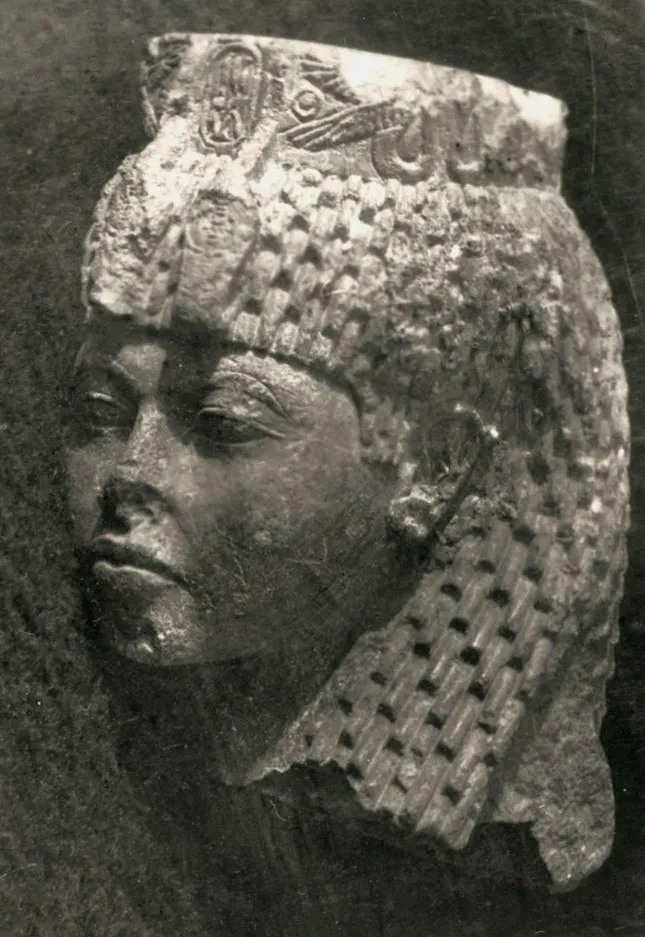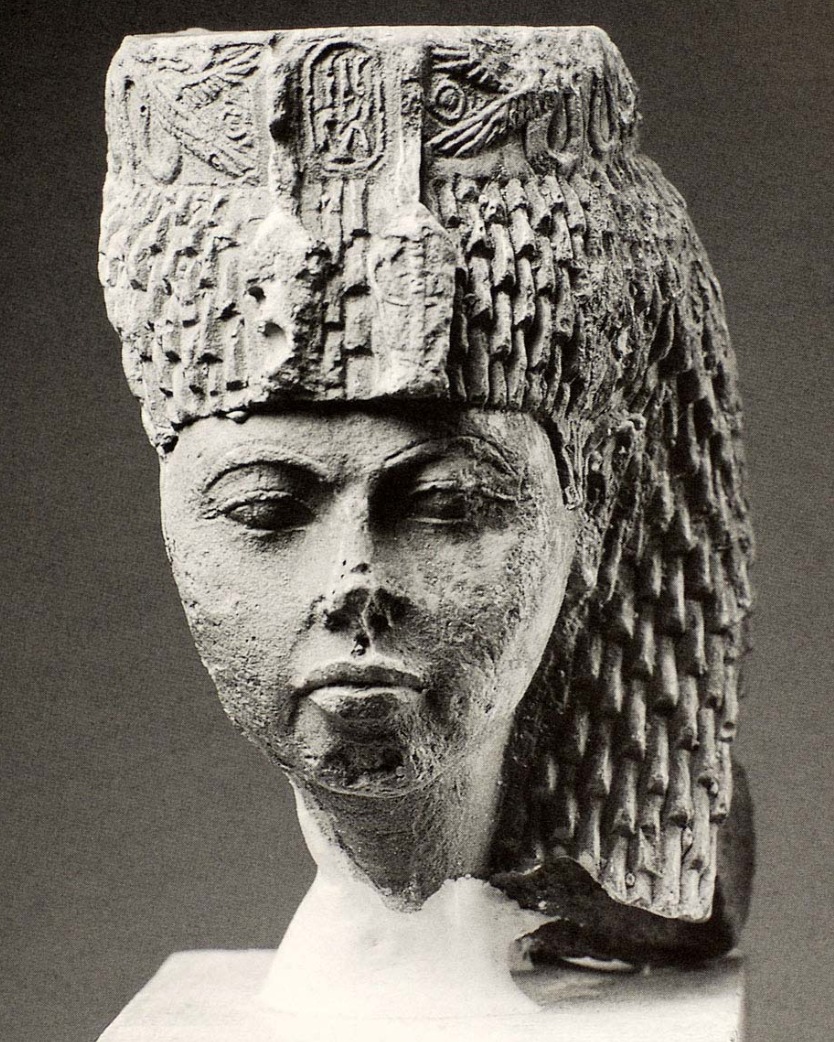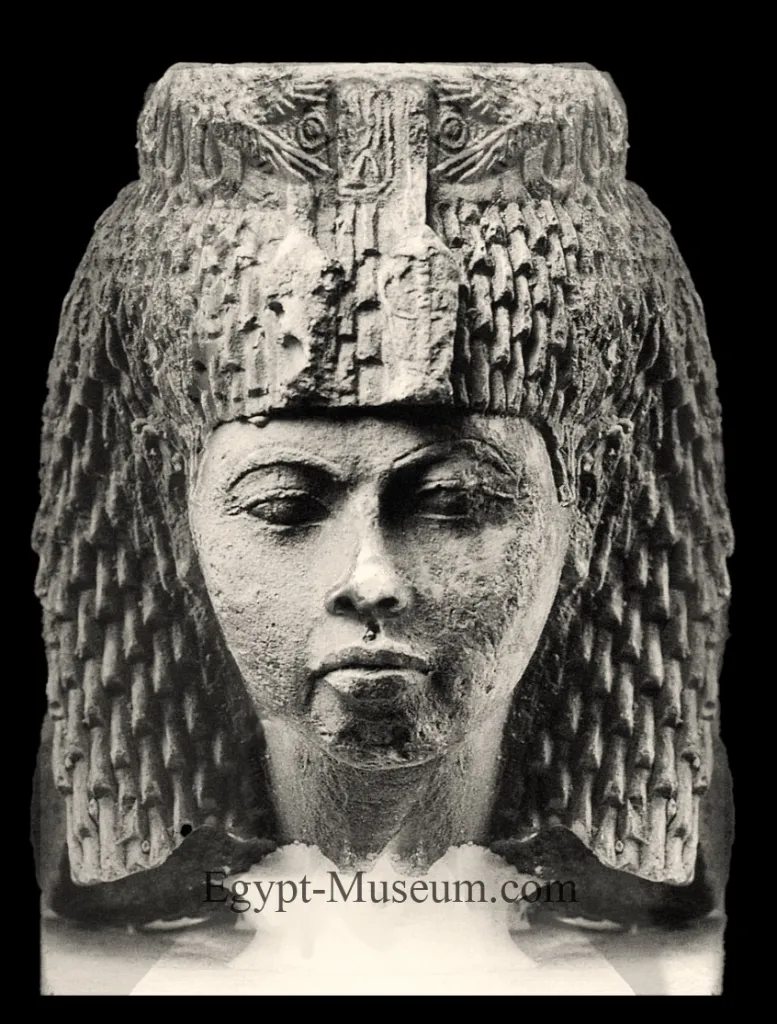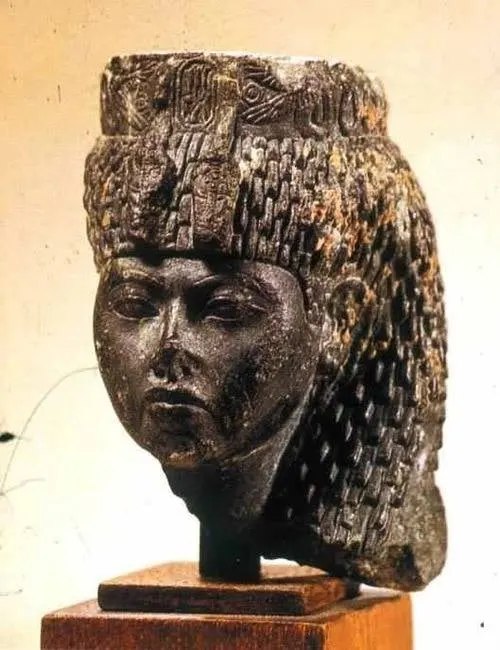The steatite head of Queen Tiye, from the New Kingdom’s late 18th Dynasty during the reign of Amenhotep III

The steatite head of Queen Tiye, from the New Kingdom’s late 18th Dynasty during the reign of Amenhotep III (circa 1391-1353 B.C.), originates from Serabit el-Khadim in Sinai. It is currently housed in the Egyptian Museum, Cairo, under inventory number JE 38257.

This intricately detailed head portrays Queen Tiye, one of Ancient Egypt’s most influential queens. Renowned for her formidable character and significant positions of power, Tiye was honored by her husband Amenhotep III with multiple shrines and an artificial lake in Nubia’s Sedeinga, where she was worshipped as Hathor-Tefnut. Her equal status to Amenhotep III is symbolized by their colossal seated statue in the Egyptian Museum.

The head’s depiction adheres to the stylistic conventions of Amenhotep III’s reign, featuring almond-shaped eyes, arched brows, a slender nose, and a distinctively downturned mouth with plump lips characteristic of Queen Tiye’s portraits.
Sir Flinders Petrie described the head as possessing a blend of haughty dignity and personal charm, meticulously crafted with delicate surfaces around the eyes and cheeks. The depiction of her pierced ear and the adorned crown, possibly in openwork gold with winged uraei, further enriches our understanding of Queen Tiye’s regal appearance.

Discovered at the temple of Hathor in Serabit el-Khadim, this artifact not only showcases artistic mastery but also provides valuable insights into the life and legacy of Queen Tiye, consort of Amenhotep III and mother of Amenhotep IV (Akhenaten). Its presence in the Cairo Museum underscores its historical and archaeological significance.
